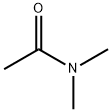Oxacillin Sodium Monohydrate , 98% , 7240-38-2
Synonym(s):
Oxacillin sodium salt monohydrate
CAS NO.:7240-38-2
Empirical Formula: C19H18N3NaO5S
Molecular Weight: 423.42
MDL number: MFCD00167146
EINECS: 629-150-0
| Pack Size | Price | Stock | Quantity |
| 5g | RMB165.60 | In Stock |
|
| 25g | RMB535.20 | In Stock |
|
| 100g | RMB1737.60 | In Stock |
|
| others | Enquire |
PRODUCT Properties
| Melting point: | 188 C |
| Boiling point: | 687℃ |
| alpha | D20 +201° (c = 1 in water) |
| refractive index | 205 ° (C=1, H2O) |
| Flash point: | >110°(230°F) |
| storage temp. | Inert atmosphere,2-8°C |
| solubility | Freely soluble in water, soluble in methanol, practically insoluble in methylene chloride. |
| form | Solid |
| color | White to Almost white |
| PH | pH (30g/l, 25℃) : 4.5~7.5 |
| Water Solubility | Freely soluble in water |
| Merck | 14,6904 |
| BRN | 4287093 |
| CAS DataBase Reference | 7240-38-2(CAS DataBase Reference) |
Description and Uses
Oxacillin was synthesized by Bristol-Myers Laboratories in 1961 starting with 6-aminopenicillanic acid. It was the first orally active and penicillinase-stable semisynthetic penicillin to be introduced clinically. Oxacillin is slightly less stable against gastric acid and shows a lower serum concentration than phenoxymethylpenicillin, but it is highly active against phenoxymethylpenicillinresistant Staphylococcus aureus. Oxacillin has been used by oral and intramuscular administration for therapy of respiratory tract, urinary tract, gynecological, and other infections caused by benzylpenicillin-resistant bacteria.
Penicillin antibacterial.
Safety
| Symbol(GHS) |   GHS07,GHS08 |
| Signal word | Danger |
| Hazard statements | H315-H317-H319-H334-H335 |
| Precautionary statements | P280g-P342+P311a-P501a-P261-P280-P284-P304+P340-P305+P351+P338-P342+P311-P280a-P405 |
| Hazard Codes | Xn,Xi |
| Risk Statements | 36/37/38-42/43 |
| Safety Statements | 22-26-36/37 |
| WGK Germany | 3 |
| HS Code | 29411099 |
| Toxicity | LD50 orally in rats: >8000 mg/kg (Goldenthal) |



